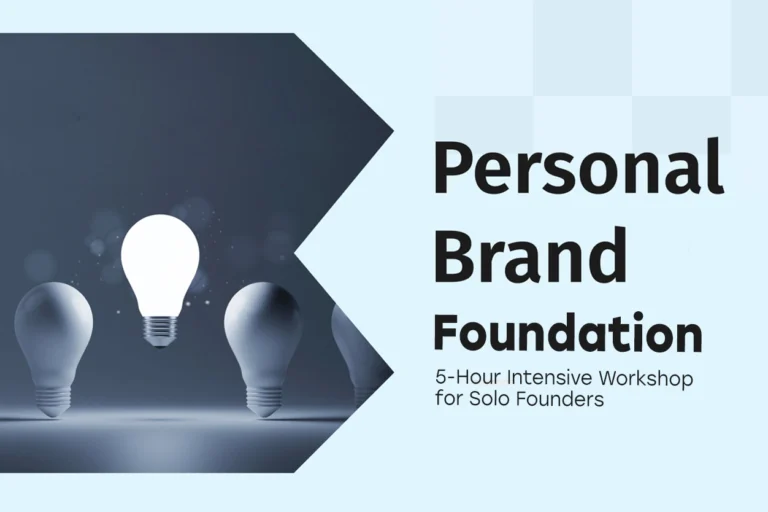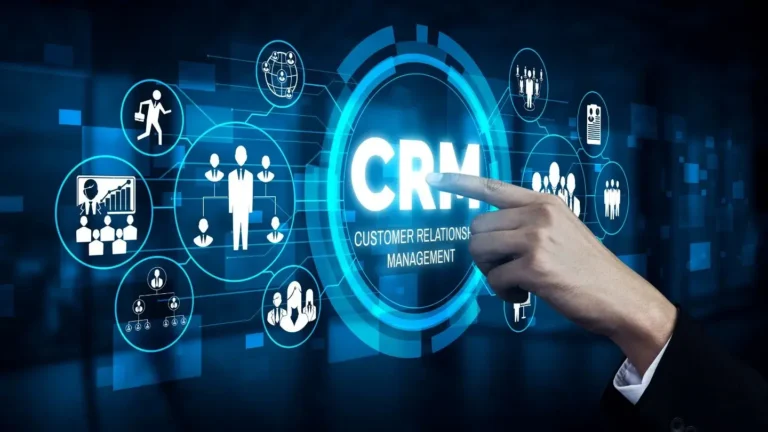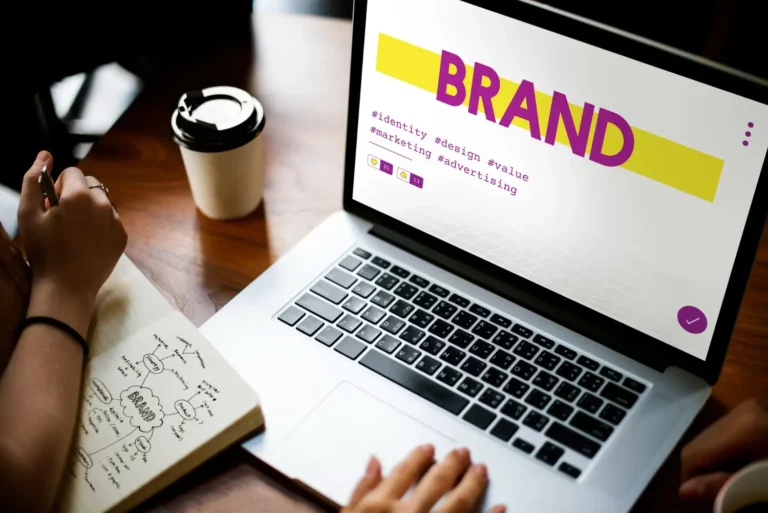Introduction
Authenticity has become the buzzword of personal branding. But this pressure to “be real” comes at the cost of emotional vulnerability, oversharing, and a creeping sense of overwhelm. Instead of building connection, it can push people to start living for their content, blurring the line between genuine expression and performance. Over time, this can backfire, leading to the very inauthenticity they were trying to avoid.
So where do you draw the line when your life becomes your brand? How do you stay true to yourself without burning out? And how do you embrace authenticity in a way that inspires, without overwhelming?
Let’s explore the pros and cons of an authentic personal brand, and the evidence-based practices for staying sane and sincere while building influence with clear boundaries that protect your voice and your well-being.
Why Authenticity Matters in Personal Branding?
Considering how people are constantly bombarded with marketing messages everywhere, authenticity creates the kind of content that cuts through the noise. A review on authentic leadership highlighted that when what you say, do, and think align, trust becomes almost automatic. For solo founders and professionals, this trust becomes the gateway to referrals, collaborations, and investor interest.
“Fake Personas collapse under their own weight.” Attempting to maintain a polished but hollow image is immediately obvious, and absolutely unsustainable in the long run. Genuine expression, even when imperfect, resonates because it feels human.
The Emotional Connection
Audiences connect with relatable stories, and authenticity bridges that gap. Humans are inherently prone to making mistakes. A polished, flawless presentation of yourself and your life are not relatable and would not forge a connection, no matter how hard you push for it. Studies in psychology reinforce that humans are drawn to shared experiences, especially struggles. Sharing lessons from challenges (rather than glossing over them) creates empathy and credibility at the same time.
You don’t have to be contantly vulnerable in order to be authentic. You just have to offer moments of truths that remind your audience: “I’ve been there too. These small signals of honesty can be the difference between being seen as a brand and being remembered as a person.
The Professional Payoff
Being authentic has measurable business value. A 2018 review in Frontiers in Psychology outlined how personal branding directly influences career outcomes. Specifically looking at the startup world, the founder’s personal brand often shapes the company’s trajectory. One study reported that 87% of investors consider the founder’s personal brand a key factor in investment decisions.
First impressions matter, but consistent impressions matter more. Image consultant Zayna Rose notes that aligning authentic expression with polished presence creates confidence and credibility. When a founder shows up as both real and professional, opportunities expand whether it’s on a stage, in an investor meeting, or through a simple LinkedIn post.
Why This Matters Now More than Ever
As audiences become savvier, authenticity has moved from buzzword to baseline expectation. People don’t just want to know what you sell; they want to know who you are, and why it matters. Building an authentic brand is about long-term trust, stronger connections, and opening doors that polish alone can’t unlock.
The Authenticity Paradox and It’s Pitfalls
If authenticity is so powerful, why does it often leave people feeling overwhelmed or worse, inauthentic? The answer lies in what researchers call the authenticity paradox: the tension between wanting to be “real” and the pressure to perform that very realness for an audience.
The Pressure to Perform Authenticity
Do you remember those YouTubers from your younger years whose content was relatable but now feels so cringe and forced? Brand strategist Anne Miltenburg describes this as the trap of “authentic vulnerability.” The cultural expectation isn’t just that you show up—it’s that you show up raw, vulnerable, and constantly available. In practice, this turns authenticity into another performance. Instead of feeling liberating, it can feel like yet another standard you must meet.
For founders and professionals, the paradox is obvious: the more you try to “look authentic,” the less authentic you actually feel. You feel anxious, you second-guess yourself, and you have this creeping feeling that the story you are telling isn’t your anymore, it’s just… content.
The Online Authenticity Paradox
Research from the University of Michigan, Haimson et. all, found that the effort to present a “true self” both online and offline comes at an emotional cost. Sharing deeply personal experiences may feel validating in the moment, but over time it can lead to fatigue, regret, and even a sense of exploitation. Like the family bloggers who throw their kid’s life under the bus for content, the emotional cost of authentic content is eventually burnout. In other words, when every struggle becomes a post, the line between personal growth and personal branding starts to blur.
This paradox is particularly acute for solo founders, who often are the brand. When your professional reputation rests on your personal identity, the pressure to constantly “be real” is magnified and the risk of burnout grows.
The Psychological Costs of Fake Personas
On the flip side, suppressing authenticity and hiding behind a “fake persona” is equally unsustainable. As Pixel Haze Academy highlights, inauthentic branding creates psychological stress. Pretending to be someone you’re not, or curating only the highlight reel, leads to internal conflict. Over time, this gap between your projected self and your lived self becomes exhausting and audiences can sense the disconnect.
The irony is that both extremes, oversharing in the name of authenticity or fabricating an overly polished persona, create the very inauthenticity you’re trying to avoid.
Professionalism vs. Authenticity: A False Tug-of-War
Another pitfall is believing you must choose between being authentic or being professional. Branding expert Kung Pik Liu argues that the two aren’t opposites they’re complements. Authenticity fosters trust by showing your human side, while professionalism creates credibility through structure, clarity, and polish. The sweet spot is balance: being real without being reckless, and professional without being robotic.
For example, a founder can share the challenges of fundraising without exposing every detail of rejection emails. They can celebrate a late-night grind without glorifying burnout. They can enjoy their wedding, without having to work, and posting it as hustle-culture (iykyk). These are moments of “strategic vulnerability” enough to connect, but still within healthy boundaries.
The Real Danger: When Life Becomes Content
Perhaps the biggest pitfall of all is letting your brand consume your life. As Miltenburg warns, when your daily experiences are filtered through the question “Should I post this?” you risk living for the feed instead of living for yourself. That kind of constant self-surveillance drains creativity and erodes the very authenticity your audience values.
Best Practices to Build an Authentic Brand Without Overwhelm
The good news is that authenticity doesn’t have to mean exhaustion. By setting boundaries, being intentional, and treating your brand as a sustainable practice (not a constant performance) you can build influence without losing yourself. Here are evidence-based strategies to do just that:
Set Boundaries on Vulnerability
In the race to be authentic, the solution is not to share everything. It is to consider 2 crucial ideas: one is to share what aligns with your values, the second is to share what would add value to others.
Global Coaching Lab calls this strategic vulnerability: sharing challenges framed as lessons, not confessions. For example, instead of posting in the heat of frustration after a deal falls through, share the lesson you learned once you’ve processed it.
This approach protects your emotional well-being while still offering your audience a real, relatable story. Boundaries make your authenticity sustainable because your private life doesn’t need to be public to be valid. This brings us to the next strategy to avoid the paradox.
Align Your Brand with Core Values
Any brand that doesn’t have their core values straightened out is doomed to fail from the start. Values are where you start your Brand Guidelines from. If your brand isn’t anchored in values, it becomes unstable. The 2018 review in Frontiers in Psychology emphasizes that personal branding is most effective when it grows out of identity: values, beliefs, and long-term goals rather than reactive content creation.
A practical exercise: write down your top three non-negotiable values. Before hitting publish, ask: Does this reflect at least one of them? If it doesn’t, it’s noise. This ensures consistency and protects you from posting for the algorithm instead of posting with intention. If your core value is empowerment, you would promote how empowering marginalised communities, and younger talent can deliver impact in your field of work.
Prioritize Consistency Over Perfection
One of the biggest causes of overwhelm is the perfection trap. You wait until your content is flawless before you share. Research on authentic leadership shows that true credibility comes from alignment between words and actions, not polish.
In practice, this means showing up consistently, even with “good enough” content. A founder who posts regularly with clear, simple insights will earn more trust than one who disappears for months, waiting for the “perfect” post. Consistency builds momentum, while perfection delays it.
You can record a small 1-minute video message while working on that new project, sharing insights about the first 3 steps you take for better communication (and project expectations). This shows your core value of clear communication and professionalism.
Balance Authenticity with Professionalism
Branding expert Kung Pik Liu stresses that authenticity and professionalism are not enemies, rather they’re partners. Audiences connect to the human behind the brand, but they also respect clarity, structure, and polish.
In practical terms:
Think of it as curated authenticity: real but framed in a way that respects both you and your audience.
Use Tools and Systems to Reduce Overwhelm
Much of the exhaustion founders feel doesn’t come from storytelling, it comes from the admin around it. Spreadsheets, drafts, scheduling, endless notifications that are enough to make anyone quit.
The solution is to lean on systems. Content batching, scheduling platforms, and even light automation can protect your mental bandwidth. Instead of writing a post every day, block two hours each week to draft, design, and schedule everything in advance. Repurpose one piece of content across platforms rather than starting from scratch each time.
Remember: authenticity is about what you share, not whether it was written at 11 p.m. or scheduled at 9 a.m.
Focus on Depth, Not Breadth
Finally, avoid the trap of trying to “be everywhere.” The Guardian notes that the best personal brands are not built overnight or across every channel. They’re cultivated steadily, with depth.
Pick one or two platforms that feel most aligned with your audience and your style (for many founders, that’s LinkedIn plus a personal blog). Show up consistently there. Doing less, better, is the antidote to overwhelm.
The Takeaway
Authenticity without boundaries leads to burnout. But authenticity with structure creates freedom. By practicing strategic vulnerability, anchoring in values, prioritizing consistency, balancing professionalism, and using systems to simplify the process, you can build a personal brand that feels real and sustainable.
Authenticity, then, becomes less about performing and more about aligning. And that’s the kind of brand that lasts.
The Long Game of Authentic Personal Branding
If there’s one truth about authenticity, it’s this: it isn’t built overnight. While viral moments can spike attention, meaningful personal brands are marathons not sprints.
Authenticity is a Marathon, Not a Moment
The Guardian cautions that the best personal brands are never overly curated or rushed. Instead, they grow through deliberate, consistent effort. Just like trust in real life, credibility online is something that compounds with time. One honest post might resonate but 50 honest posts, shared over months and years, create a reputation that sticks.
Role Models Who Got It Right
Some of the most influential founders and executives have leaned into this long game. Irina Novoselsky, CEO of Hootsuite, reshaped her brand by sharing candid reflections on leadership. She masterfully balanced personal stories with professional insights. Similarly, April Little’s posts about workplace equity resonated because she wasn’t chasing virality; she was speaking from lived experience. Both prove that authenticity pays dividends when practiced consistently.
Building Sustainability
The long game also means avoiding burnout. Research from Frontiers in Psychology emphasizes that personal branding must be sustainable, rooted in core values and identity, not reactionary performance. By setting boundaries and focusing on depth rather than breadth, authenticity becomes less of a burden and more of a practice.
The Payoff
In the long run, authenticity creates opportunity. It attracts investors who want to back people they trust, audiences who want to hear from voices they believe in, and communities who want to follow leaders they relate to. Unlike trends that fade, authenticity compounds.
Closing Thought
The best personal brands aren’t the loudest or the flashiest. They’re the ones that endure because they’re grounded in truth, balanced by professionalism, and built with patience. Authenticity may not give you overnight fame, but it will give you something far more valuable: credibility that lasts.
Staying True Without Burning Out
Authenticity is the foundation of trust, relatability, and influence for a personal brand. But as we’ve seen, the demand to “be real” can quickly spiral into oversharing, performance, or burnout. The very thing meant to set you free can end up consuming you.
The key is balance. Authenticity does not mean exposing every detail of your life; it means aligning your brand with your values and sharing stories that create connection. It means practicing consistency instead of chasing perfection. It means blending relatability with professionalism, so that your presence is both approachable and credible.
Most importantly, it means protecting your well-being. By setting boundaries, using systems to lighten the workload, and choosing depth over breadth, you can show up authentically without losing yourself in the process.
The best personal brands aren’t built overnight, and they’re not built on performance. They’re built on alignment, patience, and truth. When you embrace authenticity with intention and boundaries, your brand stops being a burden and starts becoming a legacy.
So, stay true. Stay consistent. And remember: your voice is your most powerful asset. Protect it, nurture it, and let it grow on your terms.
Want to see what would set up your personal brand to be authentic and successful?






